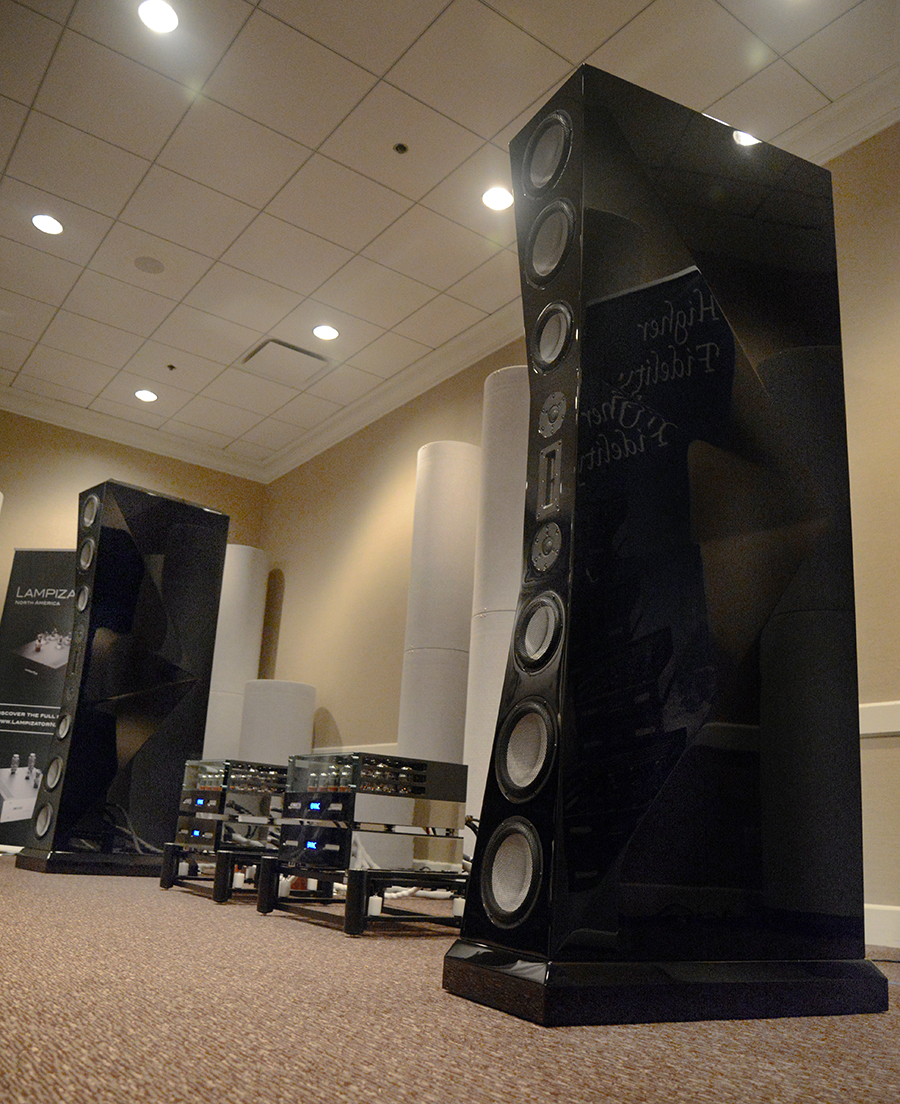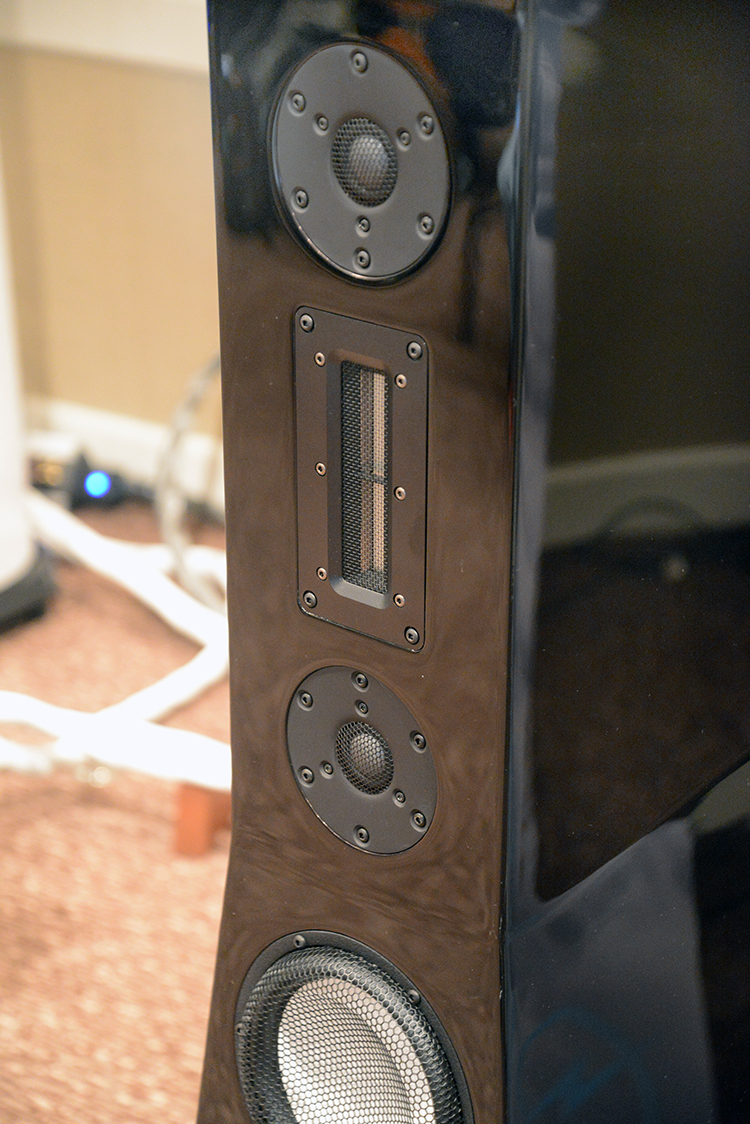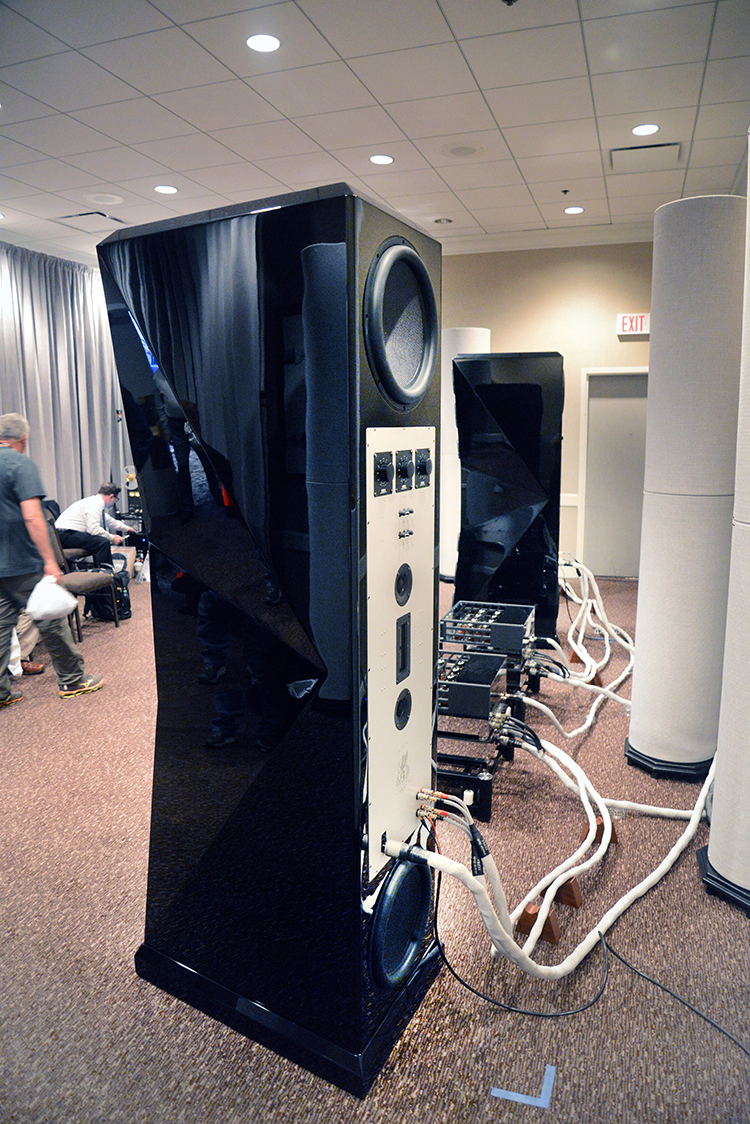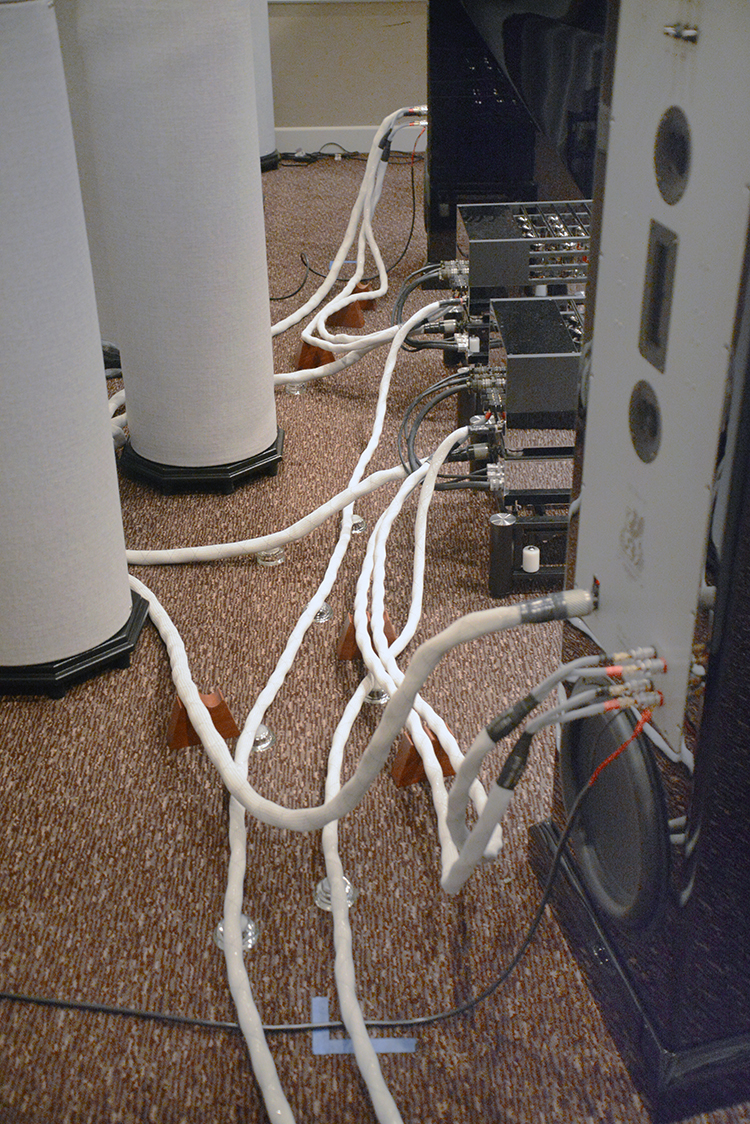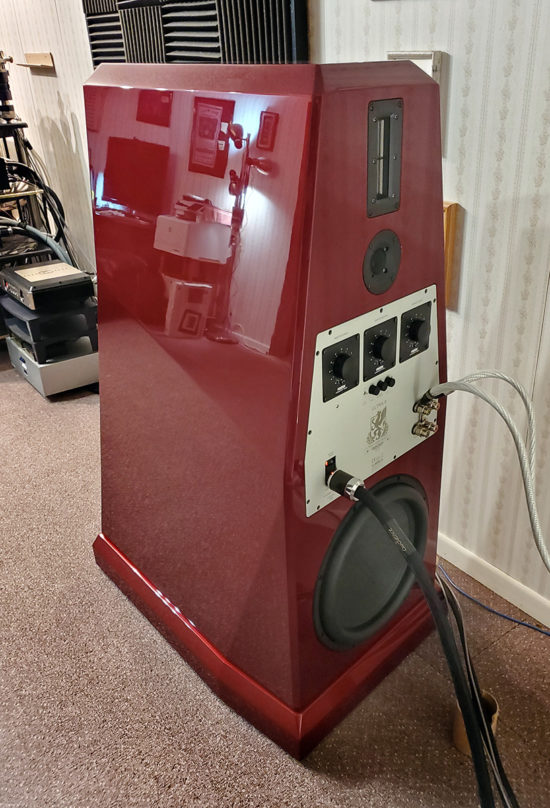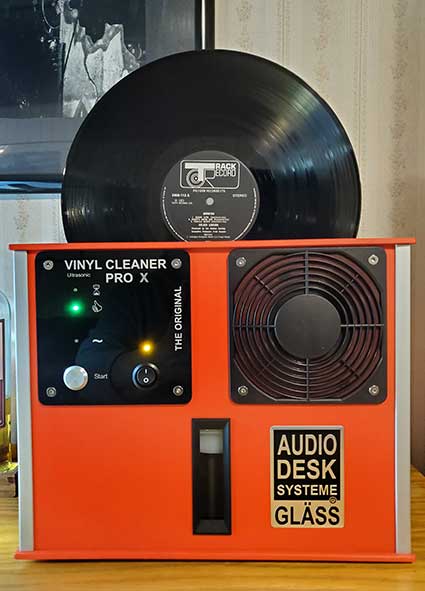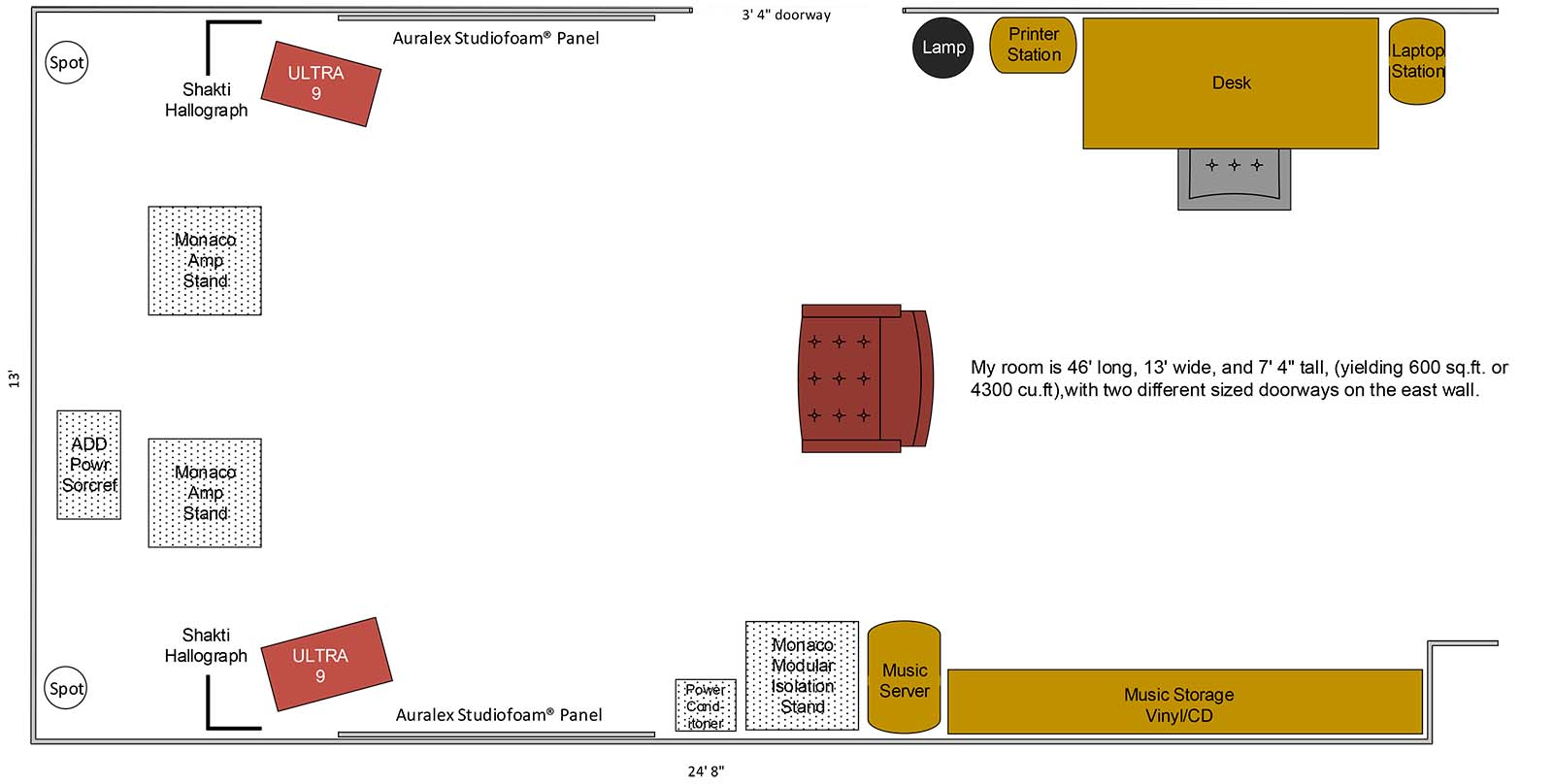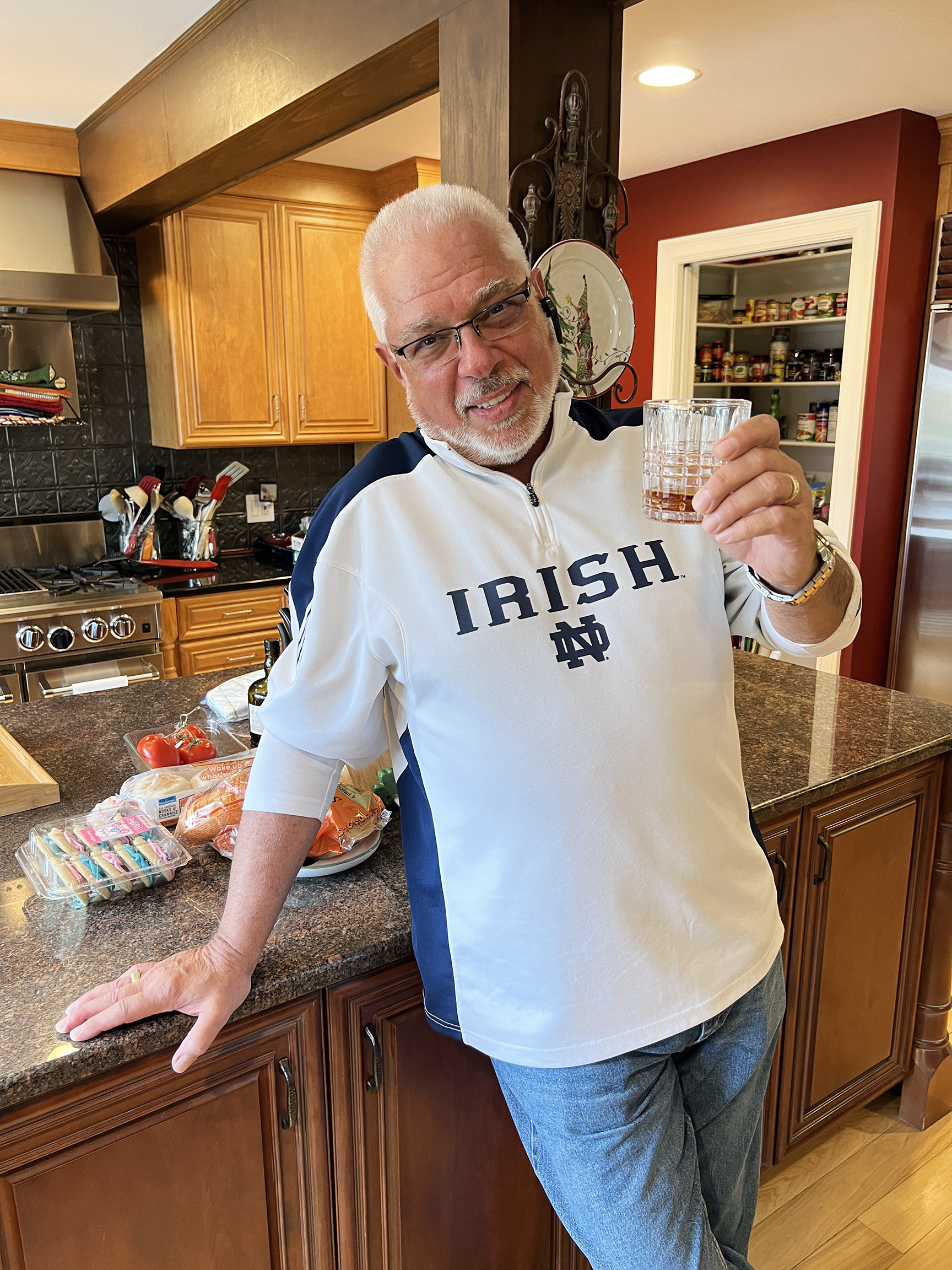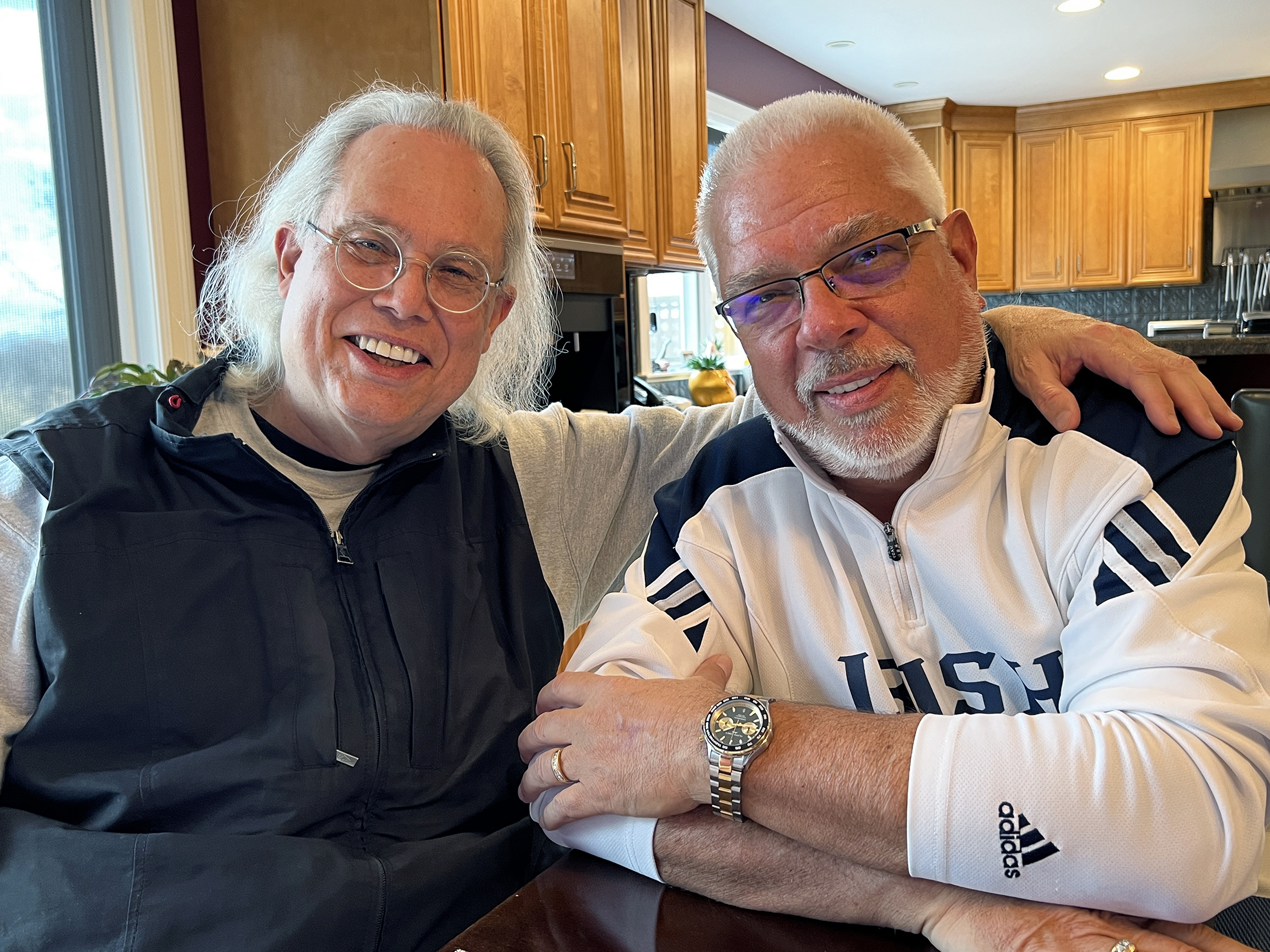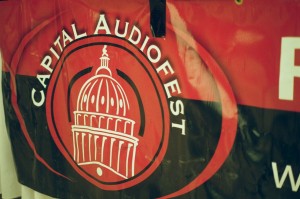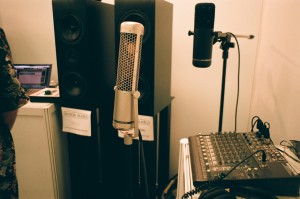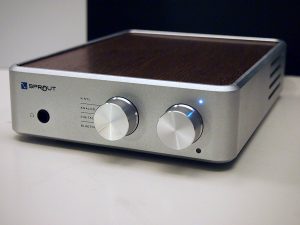Audio shows! Local, regional, national, international. I've been covering shows and have had the privilege of producing show reports for various outlets for over 25 years. I attended them as a consumer for over 15 more before that. When you've walked the halls of as many as I have, it might be understandable that it can be hard to remain unjaded and open to surprise.
Every once in a while, the diligence and persistence pay off. I live for those finds that allow me to experience that rare powerfully expressive, emotionally engaging system, one that literally takes your breath away. It's like a lightning strike! When you hear it, you know it! The latest bolt from the blue, one that has yet again reset my definition of "the best," came at this year's AXPONA, held at the Westin O'Hare in the Rosemont section of Chicago in mid-April.
I'm talking about the magic, the utter and inexplicable suspension of disbelief that can occur when all the conditions are right, when that perfect storm of electronics, speakers, cabling, software, and room set up, all align. Those most miraculous and infrequent of times when you are permitted to completely forget that what you are listening to is a recreation, a reconstructed sonic event. When you are so completely transfixed by an entirely fabricated deception that you are unaware that the time and space of the event unfolding before you are merely auditory illusions generated by a complex reconstruction engine, a conglomeration of electro-mechanical devices. It can be a transforming occurrence, transporting you through time and space to witness the sensations, feelings, and emotions that the artist/s in play worked so hard to convey, an experience that the production crew and recording engineers toiled to so accurately capture.
I'll never forget the first such system I experienced. It was the summer of 1973, I had just graduated high school, and Pink Floyd's Dark Side of the Moon was just a few months old. I recall every component! The source was a B•I•C 980 belt-driven turntable (from a time when ALL "record players" came with their own integrated tone arm, a captured power cord, and non-descript "patch cord"), using the Shure V15 Type III moving magnet cart. Amplification was provided by Bob Carver's radically different and über-powerful Phase Linear 700B stereo power amp and the 4000 preamp (with phono stage, featuring the Autocorrolater, Bob's early form of noise reduction, including a peak unlimiter and downward expander). The speakers were Winslow Burhoe's omnidirectional EPI 400 minitower, with a 6" woofer and 1" inverted dome tweeter on each of the four 14" wide by 38" inch tall baffles of the enclosure. I'll leave it to you to research the gear if you are interested.
Yet as I look back, it has become clear that was the defining moment. That was when I empirically understood that not everything sounded the same; that there could be a clearly discernible, audible difference in how electronics, sources, and loudspeakers affected the resultant sound of the system. Once I'd witnessed such expressive communication of music, recreated in such an enveloping and engaging manner, with exceptional dynamic scaling and no sense that anything was being constrained or left unrevealed—for its era, anyway—I was hooked. Hearing that system was clearly the final push over the edge, and the beginning of what was to be a lifelong quest, and the foundation of my infatuation with the loudspeaker… As if that experience (thanks again, John K.) wasn't quite enough, later that summer I was equally moved when I first heard Jon Dahlquist's amazing DQ-10's! Game on!
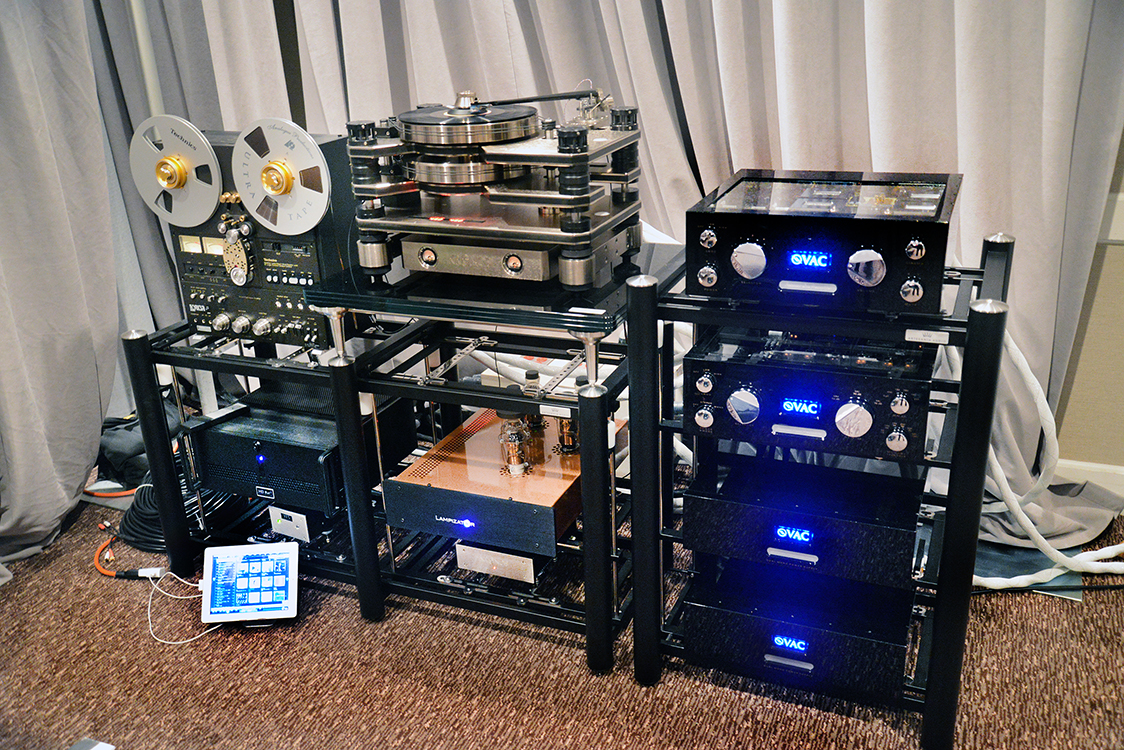
Since that time, it has been a slow, steady march forward. Granted, the rate of progress, and the cost, of systems that have incrementally reset my personal "yardstick" for what represented the "best" in loudspeakers has steadily accelerated, and increased. Yet, we can point to these very efforts from designers who continually push the limits of state of the art speaker design as what has driven the monumental improvements now so commonly widespread in considerably less costly speakers.
If I start highlighting the systems that nudged "the best" forward just since the turn of the century, one of the most significant I would have to point to would be the introduction of the Von Schweikert VR-11 at T.H.E. Show (seen then as the "renegade" show), which ran concurrent with CES 2004. Coincidentally (or not?) using all VAC electronics (Phi 2.0 Master Control Preamp and four Phi 220 monoblocks), and Oracle front ends (CD 2000 Transport, CD 2500 Player, the Delphi Mk V Turntable), it was an exhilarating experience, and set the bar for some time.
Moving further forward, into this decade, CES 2010 saw Joe Cohen's Lotus Group introduce the Granada UB II open-baffle loudspeaker ($125,000/pr.). Sources and phono stage were from Hong Kong based Hanss Acoustics (T-60 turntable and the Acoustics CD 20 CD Player, as well as the two-chassis all tube PA-60 phono stage), with Steve McCormack's then brand new and astonishingly transparent VRE-1 linestage, and a pair of Pass Labs XA 30.5 stereo amps, used in a vertical bi-amplification configuration.
Next, at CES 2012, Alon Wolf unveiled the exquisite Magico Q7 ($165,000/pr.). Using a Spectral DMC-30SS linestage, Magico's own music server and prototypical power amplifiers, and all MIT cabling, the room was pure magic, with rich, vibrant, and warm tone and exceptional dynamics. Even friends and colleagues who had not really "gotten" what Magico was about to that point were stunned with the presentation in room 35-209 of the Venetian that year.
In September 2016, to celebrate YG Acoustics 15th anniversary, Yoav Geva unveiled the Sonja XV ($265,900/pr.) in a private showing in New Jersey. Using all Audionet electronics, the Kronos Pro turntable with SCPS1 supply, Black Beauty arm, and Air-Tight Opus 1 cart, and all Kubala-Sosna Elation series cabling, this enormous 4-tower speaker really raised the bar. The XV's clearly transcended earlier limits of transparency and resolution, and left me wondering just what it would take to usurp their spot as the top performer.
But the fortunate attendees of AXPONA 2017 who took the time to visit the Dearborn room on the first floor of the Westin O'Hare the fourth weekend in April were afforded an enviable and singular privilege. It is no small accomplishment when the fruits of the painstaking, exhaustive, indefatigable, and passionate labors of some of the world's most exceptional designers and engineers combine to provide a listening experience so profound, so stunningly real, so inescapably authentic. This room featured the work of Kevin Hayes (VAC), Louis Desjardins (Kronos), Hisayoshi Nakatsuka (ZYX), Lukasz Fikus (LampizatOr), Jeff Jacobs (J-Corder), Kevin O'Brian (YFS), Cayetano Castellano (Artesania Audio), the entire engineering team at MasterBuilt Audio, Art Noxon (ASC), and the Von Schweikert design team (consisting of now semi-retired Albert Von Schweikert, his son Damon Von Schweikert, and their new VP, Leif Swanson).
Sources were either the Kronos Audio Pro Turntable ($38,000), with the Kronos Audio SCPS-1 Power Supply ($13,500), using the Kronos Black Beauty Tonearm ($8,500) which was fitted with a ZYX Audio Ultimate 4D Cartridge ($4400), a J-Corder rebuilt Technics 1520 Reel to Reel ($14,000), or the YFS Ref 3 Music Server ($17,500) with the Lampizator Golden Gate DAC ($20,000). Electronics were all from Valve Amplification Company, and included the Statement Phono Stage ($80,000), the Statement Line Stage ($75,000), and the Statement 450 iQ Monoblock Power Amplifiers ($120,000/pr.). The speakers were, of course, the Von Schweikert Audio ULTRA 11 ($295,000/pr.), with a pair of Von Schweikert Audio Shockwave V12 Subwoofers ($11,500/ea.) deployed critically to manage active room correction. Interconnects, power cords, and speaker cables were all from the ULTRA series of MasterBuilt Audio (>$200,000). The new IsoThermal TubeTraps from Acoustic Sciences Corporation ($26,000) were used for room treatment, and all equipment rested on Artesania Audio stands, including the Exoteryc 4-shelf Rack ($7,000), an Exoteryc 3+3 tandem Rack ($10,000), the Exoteryc Turntable Platform ($3400) and the Aire Monoblock Amplifier Platform ($7,400/pr.).
Gleaning that equipment price list, it doesn't take much effort to arrive at the conclusion that we are in the lofty one-million-dollar neighborhood. While I've heard speakers that sell for as much as this entire system (special models from Kharma and Wisdom), nothing I've heard can equal or best the ULTRA 11 across the board.
Briefly, the Von Schweikert Audio ULTRA 11 is their new flagship product, some four and a half years in development. The pinnacle of their ULTRA line, it is a 14 driver per side, 850 pound, 7' 6" tall behemoth. With a stated frequency response of 10 Hz to 100,000 kHz (-3dB @ 16Hz and 40,000Hz), it represents a monumental achievement in acoustic engineering.
Each channel of the ULTRA 11 loudspeaker system is physically time-aligned in an enclosure fabricated using their exclusive version 2.0 Aktive Cabinet Vibration Control technology, a superbly cost effective method using several unique materials in a select constrained layering process to eliminate cabinet interaction and noise. The front face of the cabinet uses four 9" reinforced ceramic mid-bass drivers, two 7" reinforced ceramic midranges, two beryllium tweeters, and a 5" aluminum ribbon super tweeter, in a concentric array. In fact, if you were to cut the ULTRA 11 off between the lower beryllium tweeter and the leaf super tweeter, you'd have a VR-55 Aktive, albeit without the powered subs and only a single 3" leaf tweeter in lieu of the whole ambiance array used on the ULTRA.
As striking as the ULTRA 11 is when beheld from the front, stepping to the rear will give you pause, and an inclination as to just how this megalithic speaker pulls off a good bit of its extraordinary magic. There we find a pair of 15" sealed subwoofers, one at the top of the enclosure, the second near the bottom, each powered by its own 1,000-watt amplifier. Below the upper subwoofer, we find a suite of controls, with individual controls for each of the two subwoofer's level and frequency, the two front tweeters level, the front super tweeter level, and the rear ambience driver array level control.
Situated immediately below the controls we find the ambient retrieval array. Centered on the rear baffle, the array uses a pair of horn loaded Magnesium tweeters (chosen because they can operate at lower frequencies than the Beryllium tweeters on the front), one above, and one below, a second ribbon super tweeter, identical to the one used on the front baffle. This flexibility allows for virtually seamless integration into any room, allowing for compensation and discriminatory tuning for any physical surface type or furnishing, room loading, or most any other room challenge.
To "decode" the original soundfield, they use a unique crossover approach called the Global Axis Integration Network™. In following their basic philosophical design approach, that it is, after all, the microphone's voltage signal that is recorded, not actual music, this network is engineered to recreate a dispersion pattern that simulates the pickup pattern of an omnidirectional microphone. Von Schweikert Audio has used this unique crossover methodology, which includes that integral ambience retrieval system (fed a specifically derived signal for a driver, or group of drivers, on the rear baffle of the enclosure) since the original VR-4 was released in 1993. Even before that, with the ongoing development of the original Vortex Screen, Von Schweikert has continually advanced this technology, which it has termed Acoustic Inverse Replication™.
Over the three days of the event, I was privileged to spend some 3 hours in front of this system; some while open to the public, and much more after hours in private audition. So, let's talk about the sound in that room. Though I will try to explain what I heard, the performance in that room was so articulate and emotionally engaging, that mere words will never be able to do it justice.
This system portrayed tone color, instrumental timbre, with an accuracy that I have only witnessed a handful of times previously. The voicing was full bodied and replete with the complex harmonic structure, including its texture, of instrumental voices, rendering a voiced tonal balance that was as faultless as I've ever experienced. Listening to female vocals, like those from Janis Ian's Breaking Silence on reel to reel, were chillingly stark and emotive.
For a loudspeaker communicating with the blended voices of 28 drivers, its coherence was extraordinary. The sense of presence, the realism, scale, and vitality of the music, was simply the most truthful I've heard. Maintaining the proper loudness across the spectrum of each instrument, from its lowest to highest registers, its broadband accuracy, combined with the essential non-existence of any notable additional coloration or loss of harmonic body across the entire audible spectrum, represents a new benchmark in my experience.
Their ability to render stark transparency to the sources, to reveal any nuance in detail or scale, was disarming. Their ability to resolve so lucidly the subtle differences between recordings, and the nuances of each, to reveal staging cues and differences, is exceptional, and is closely matched only by a few other speakers in this same stratospheric price range.
For the record, resolution does not mean bright or super-detailed; it is not code for excessive upper-midrange or treble energy. True resolution reveals detail and nuance, including microdynamic subtitles such as extremely fine transient detail or the subtleties of instrumental tone color and texture. It is indicative of the enhanced ability to follow a single instrumental line deep within dense and convoluted arrangements, or by the depiction of a starker sense of the space between and around images within the soundstage.
True resolution in a loudspeaker is accomplished through heightened driver clarity. Such clarity is achieved by augmented design developments and/or the use of unique materials that lead to lower distortions, both electrically and/or mechanically. Such improvements result in the unmasking of previously obscured information, not by enhancing or emphasizing any particular bandwidth or frequency range. In short, I would use the term unmasking to express what true resolution represents, not terms like bright or detailed, which, while may also be artifacts of less-effective driver design, do nothing to influence resolution.
Transients were spectacularly fast and so clearly defined and cleanly delineated that the silence between musical impulses was distinctly resolved. They create a sonic representation so immediate and palpable, so vivid and articulate in detail, and so utterly correct in voice, that you simply have to hear them to understand.
Overall, the ULTRA 11 exhibits the most superb dynamic performance I've yet experienced. As much subtlety as they expose in the microdynamic realm, they simply stunned listeners with their macro capabilities, revealing the best I've ever heard in both weight and impact. The ULTRA 11's bass pitch definition is unsurpassed in my experience, with unyielding yet utterly articulated weight and attack of torturous drum or bass tracks. This system, more frequently and fully, had the ability to evoked fight or flight responses with musical drama like that server up at the conclusion of a 16/44.1 digital rip of "It's a Miracle," from Roger Waters' masterpiece, Amused to Death.
All these extraordinary attributes combine to present an unsurpassed degree of soundstaging; layering, image specificity, size, and shape. The overall spatial presentation, hall dimensionality, instrumental placement and interrelationships, the space between and around those remarkably defined voices, and reverberant cues, set a new benchmark of performance. This is really no surprise to this listener, as this has been a hallmark of Von Schweikert Audio products since I first heard the original VR-4. It is in fact one of the reasons I've owned six different pair of Von Schweikert Audio speakers over the past two decades.
The one issue I had with them, and in light of full disclosure, with virtually every other single tower speaker I've heard that is this tall, was an exaggeration of the soundstage and of image sizes. They are notably larger than life, much like watching an early 1960's film in Ultra Panavision 70 or CinemaScope. While the images are all in scale when considered in their interrelationships, actual image sizes are just too large to be considered lifelike. Damon, Leif, and I talked about this, and they assured me that this was a byproduct of setup in that room, having never noticed this in any other installation, including at their factory. While I have no reason to doubt them, I have to report what I heard…
With that one exception, music served up by the ULTRA 11's, as driven by Kevin Hayes' utterly remarkable Statement series of electronics, through the MasterBuilt ULTRA cabling system, was unlike anything in memory, save for the Magico Q7 and Q7 MK II, (and to some similar degree, the less expensive S7) or the YG Acoustics Sonja XV, especially in their resolution and transparency abilities.
However, in the areas of coherence, tone color, and especially dynamics, both the sense of unfettered ease and seemingly unrestricted scaling, the ULTRA 11 has no equal. My hat is off to Maestro Albert, Damon, and Leif for having realized such an exciting and involving speaker, even though few of us will ever be able to experience such magic outside of a showing like this one.
While I urge any of you who love music and the art of reproducing it in the home to go hear this benchmark system, beware. The show concluded on Sunday, and I didn't even turn on my reference system (which is no slouch, by any measure) for fear of being disappointed by comparison. But, if you are interested in hearing the pinnacle of what the best designers in the industry can do right now, today, seek out and listen to this system. It will be on display at the Munich Hi End show in mid-May, and, if the logistics work out, MAYBE back in time for display at the Los Angeles Audio Show at the beginning of June. It will change the way you hear everything else for some time to come.
In the meantime, I'm going to continue to trudge the halls of every audio show I can muster. Because you can just never predict when lighting will strike again!





